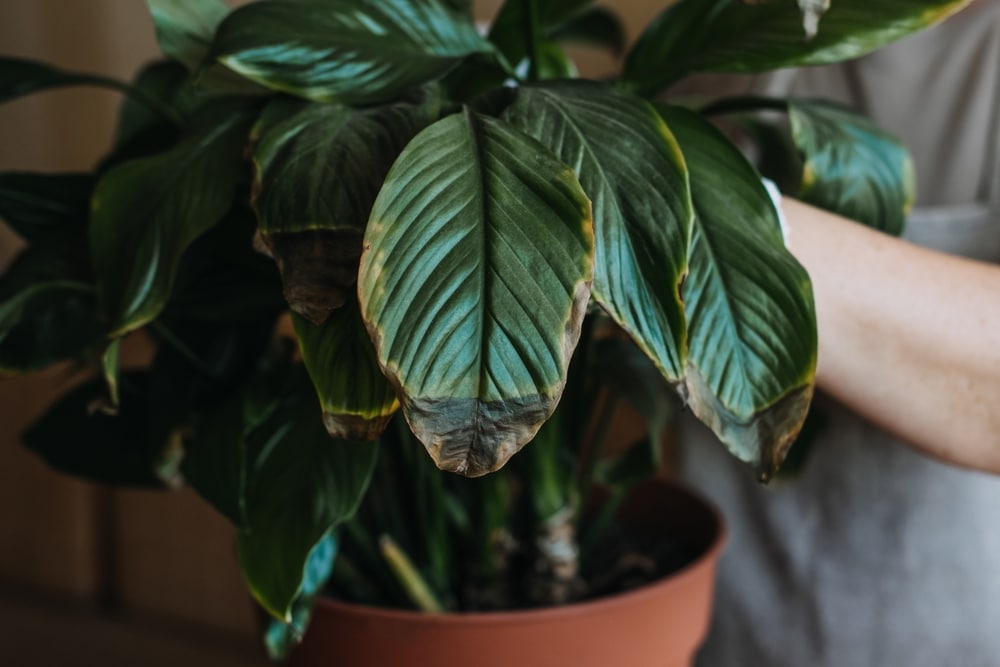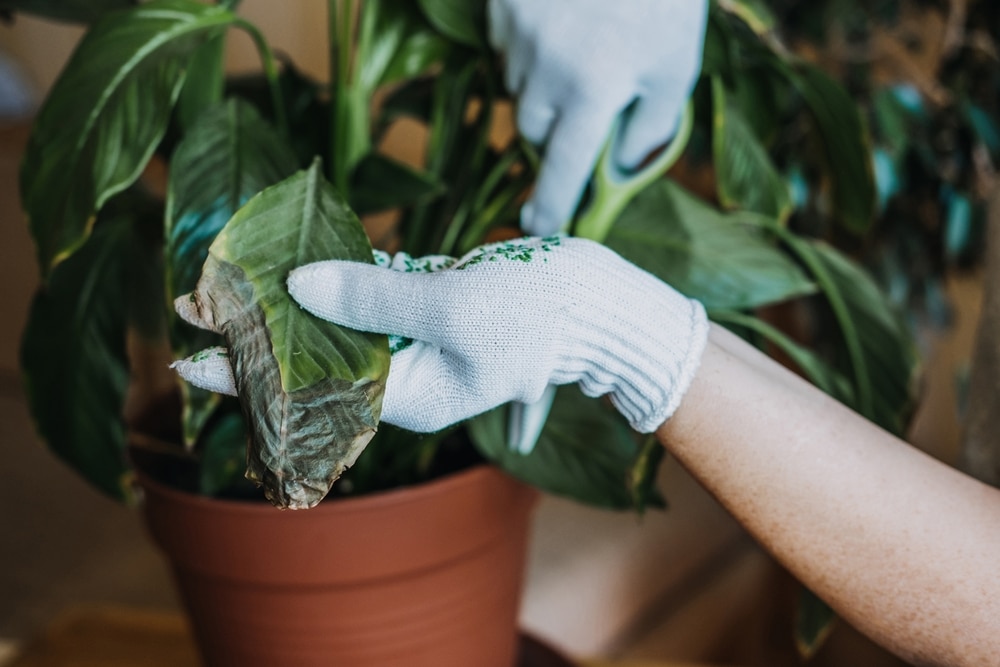Peace lilies are a beautiful, low-maintenance plant that can brighten up any room. These tropical plants are praised for their white flowers and lush, green leaves that add a touch of natural elegance to any indoor space. But while peace lilies are generally easy to care for, sometimes things can go wrong despite our best efforts. For example, peace lily owners will likely find black leaves on their plants at some point in their grower’s journey. And even though it’s disheartening to notice your peace lily leaves turning black, don’t give up!
Chances are, the reason for this is pretty straightforward and easily fixable.
Watering & Water Quality
Perhaps the most common causes of black leaves are improper watering and poor water quality. These plants come from tropical regions that offer high humidity and consistent moisture. When peace lilies are grown in dry, indoor conditions, they start to experience stress, which manifests as black leaves.
If your peace lily’s leaves turn dark, you may be watering too little. Check the soil before watering to get a sense of the moisture levels. The peace lily soil should be evenly moist but not soggy or waterlogged. Consider using filtered water or rainwater for your peace lily to avoid any potential chemicals or minerals in tap water that could damage the plant.
Bad Lighting
Inadequate lighting is also a common reason for peace lily leaves turning black. These plants need plenty of bright, indirect light to thrive indoors. If your lily isn’t getting enough light, its leaves will begin to turn black and eventually wilt.
Move your peace lily to a brighter spot in your home and keep an eye on the leaves. This could be an east-facing window that gets good light throughout the day or a place near an indoor light source. Then, if they start to turn green again, you know you’ve found the perfect spot!
Fungal Infections
Fungal infections can occur when the plant is overwatered or the pot does not have adequate drainage. The peace lily’s roots need oxygen to stay healthy, so sitting in water can cause them to start rotting. This harms the roots and can lead to a fungal infection that will discolor the peace lily’s leaves.
Examine your peace lily closely for any brown or black spots to determine if a fungal infection is to blame for the black leaves. If found, spraying the plant with a simple mixture of water and baking soda can help eliminate the fungus. You can also use a more potent fungicide; however, you’ll need to know which type of fungus is present to choose the right product.
Root Rot
Another unintended consequence of overwatering a peace lily is root rot. This happens when the peace lily’s roots sit in water for too long and start to break down. This compromises the plant’s ability to take in nutrients, which can cause the leaves to turn black.
If you think your peace lily has root rot, it’s essential to act quickly. First, inspect the roots by removing the plant from the pot. Next, you’ll need to trim away the affected roots if they’re brown or black and mushy. You can then replant the peace lily in a fresh, well-draining potting mix.
Cold Damage
During the winter months, peace lilies are especially vulnerable to cold damage. Sudden temperature drops can send the plant into shock, causing the leaves to turn black. This could come from a drafty window or cold air from an open door.
To prevent this, make sure your peace lily is away from any potential sources of cold air. These plants perform best when kept in a consistent environment with temperatures above 60 degrees. In addition, try not to remove any healthy leaves from the peace lily as they help insulate the plant.
Wrapping Up
While peace lily leaves turning black can be alarming, it’s usually not a cause for major concern. The problem is often easily fixable with a few simple changes. You can also prune your peace lily to improve its appearance. With the proper care, your peace lily will return to its vibrant self in no time!

